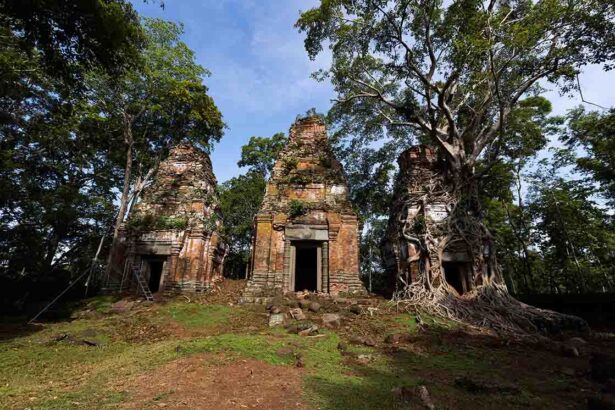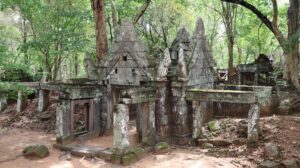
Krachap Temple (ប្រាសាទក្រចាប់), one of the lesser-known but captivating sanctuaries within the Koh Ker archaeological complex in northern Cambodia (Preah Vihear Province), offers a quiet glimpse into the spiritual and architectural richness of the Khmer Empire.
Dating Back to the 10th century, this medium-sized temple built during the reign of King Jayavarman IV when Koh Ker briefly served as the capital of the Khmer Empire. The name Krachap in English mean Trapa bicornis is a type of aquatic plant that resembles a water hyacinth. It bears fruit at the base, its fruit shaped like a buffalo’s head.
The temple is located in the northeast corner of the Rahal, near the axis of its northern dyke. Constructed primarily of brick and laterite, the temple consists of a group of small sanctuaries arranged around a central courtyard, reflecting the architectural style of the Koh Ker period. It consists of a quincunx of five towers on sandstone platforms, the central one distinctly higher than the other four. The temple has two enclosures such as a simple outer one with entrance pavilions (libraries) east and west which has vanished, seemingly because they had been built of perishable material and the inner enclosure is a quite different matter.
In dedication to Triphuvana Mahadevi “ព្រះត្រីភូវនាទេព” (Lord of Three Universes), the temple features elegant carvings on its sandstone lintels and doorways, though many are weathered by time. According to the looter inside the perimeter of Prasat Krachap, there were 13 statues stolen and three of them were located inside the central brick tower house of Shiva-Skanda (ព្រះឥសូរ និងកូនរបស់ទ្រង់” ព្រះស្កន្ទ”), Skansa on peacock, reclining Vishnu, and Ardhanarishvara statues.
Despite this, remnants of decorative motifs and Sanskrit inscriptions offer valuable insight into the religious and cultural life of the era. There are 38 inscriptions grouped together under the inventory number K.183, a thousand lines of script listing the names and occupations of temple servants called in from the multitude of villages dotting the empire. One significant inscription bears the date 928 A.D., suggesting that abundant donations by the people had been made to mark the King’s accession to the supreme throne. Another record is the name of the god: Tribhuvanadeva (ព្រះទ្រីភូវនេទេព), possibly a name for Vishnu rather than Shiva, not to be confused with the Tribhuvaneshvara of Prasat Thom. It also mentions Jayavarman IV as a donor, certainly the most eminent but by no means the only provider of such generosity.
In short, this temple is dedicated to the Hindu god Shiva, and built in Koh Ker and Banteay Srei style with the foundation and stratum of the temple were made of brick and lava stone (laterite) while doorframe, column and gallery were made of sandstone. The carvings in the sandstone at this temple are similar to those at the Banteay Srei temple. Surrounded by dense forest, Krachap exudes a sense of isolation and serenity, making it a peaceful stop for explorers venturing through the Koh Ker complex. Its quiet charm and historical significance make Krachap a meaningful piece of Cambodia’s vast cultural heritage.
Gallery
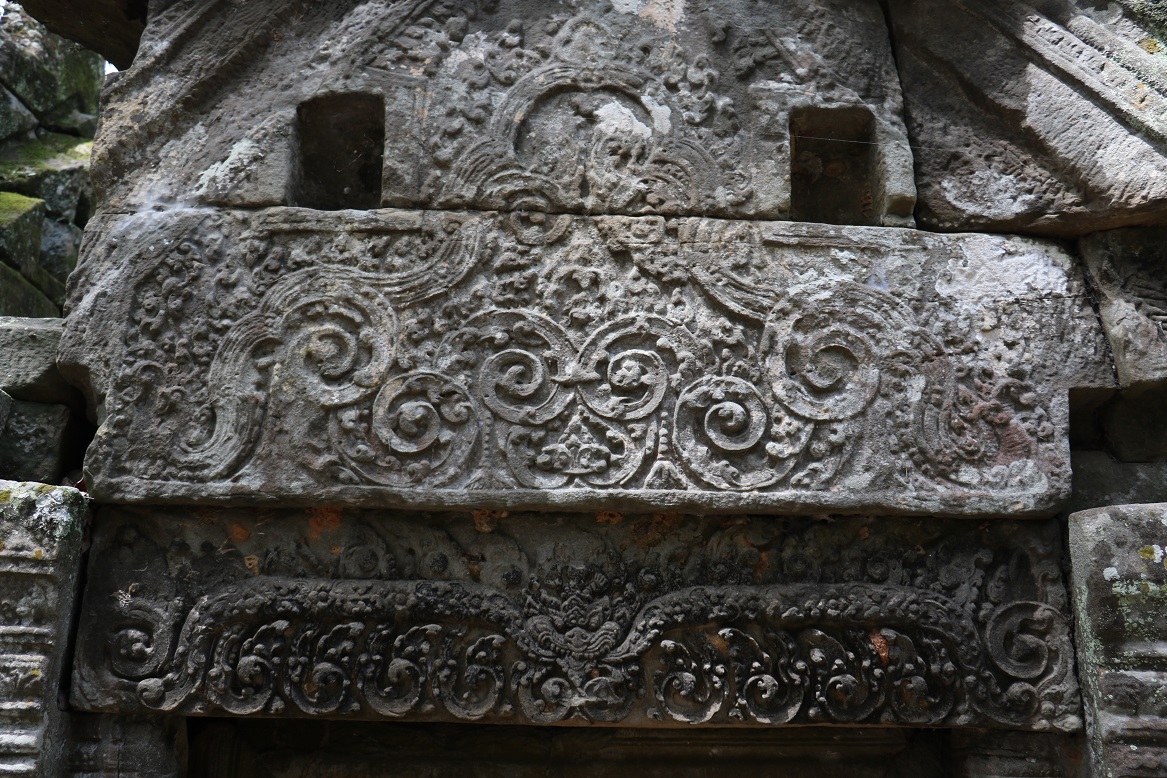 Krachap Temple © Beyondangkor.org
Krachap Temple © Beyondangkor.org 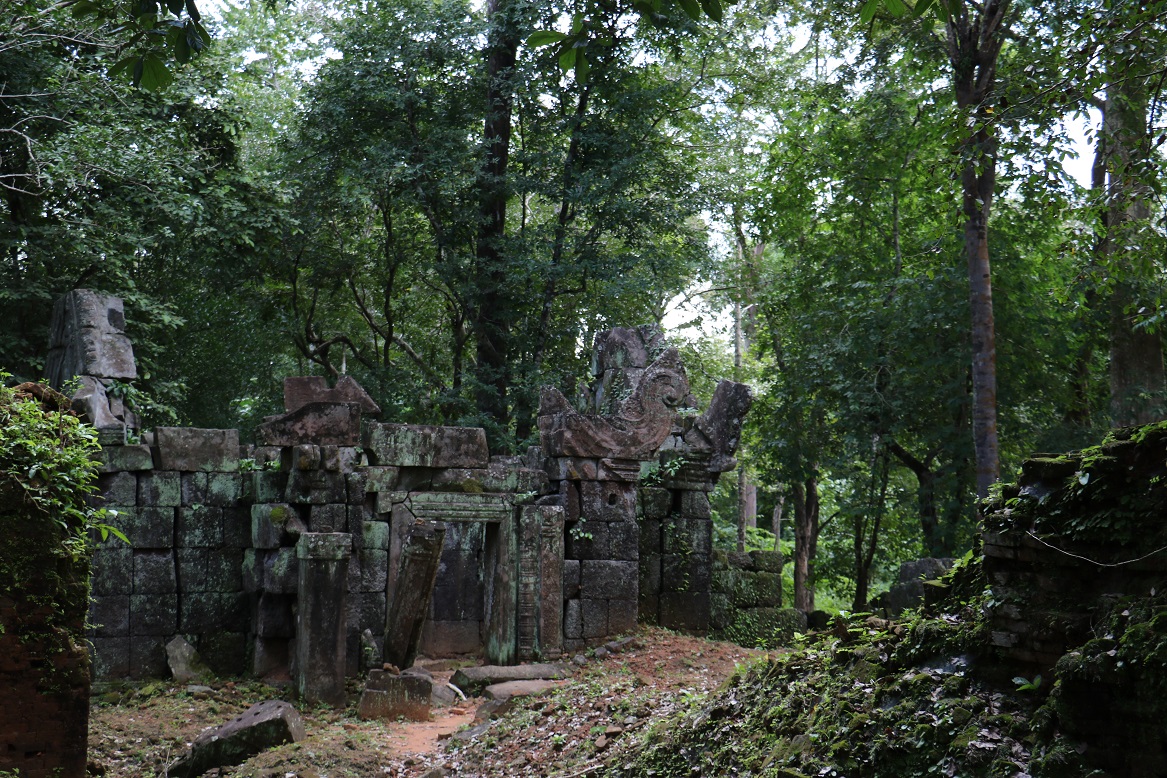 Krachap Temple © Beyondangkor.org
Krachap Temple © Beyondangkor.org  Krachap Temple © Beyondangkor.org
Krachap Temple © Beyondangkor.org 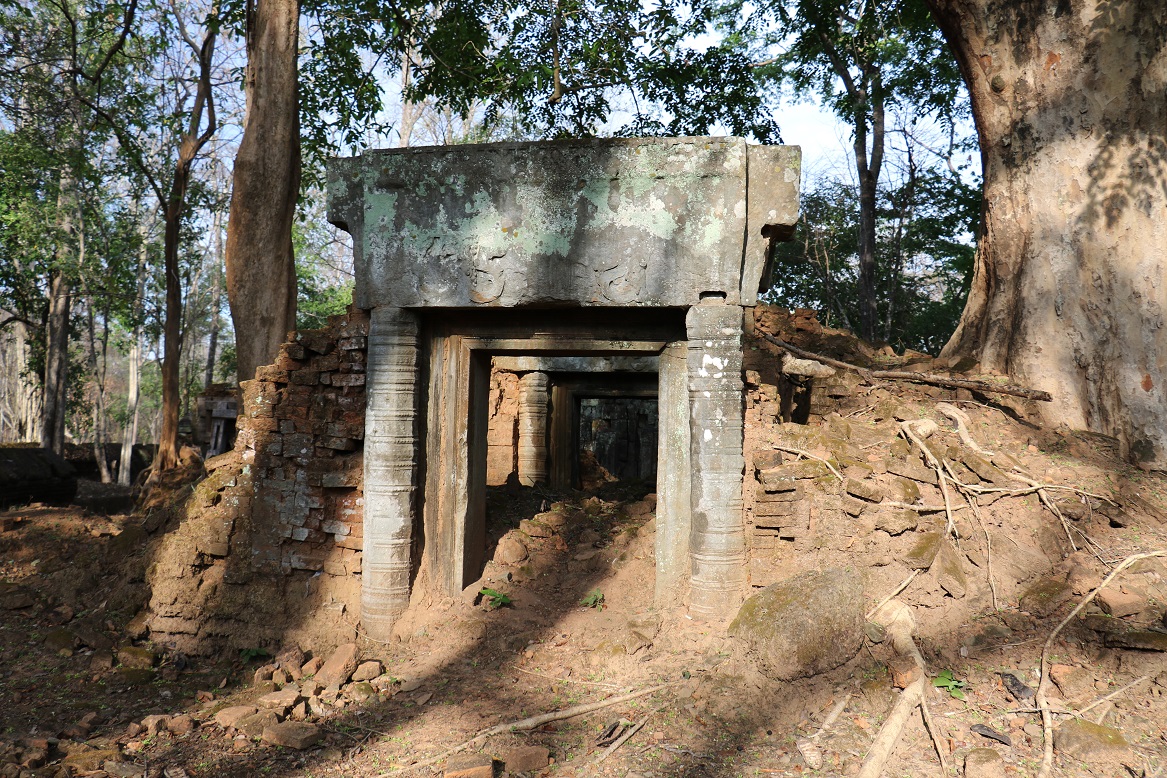 Krachap Temple © Beyondangkor.org
Krachap Temple © Beyondangkor.org  Krachap Temple © Beyondangkor.org
Krachap Temple © Beyondangkor.org  Krachap Temple © National Authority of Preah Vihear
Krachap Temple © National Authority of Preah Vihear 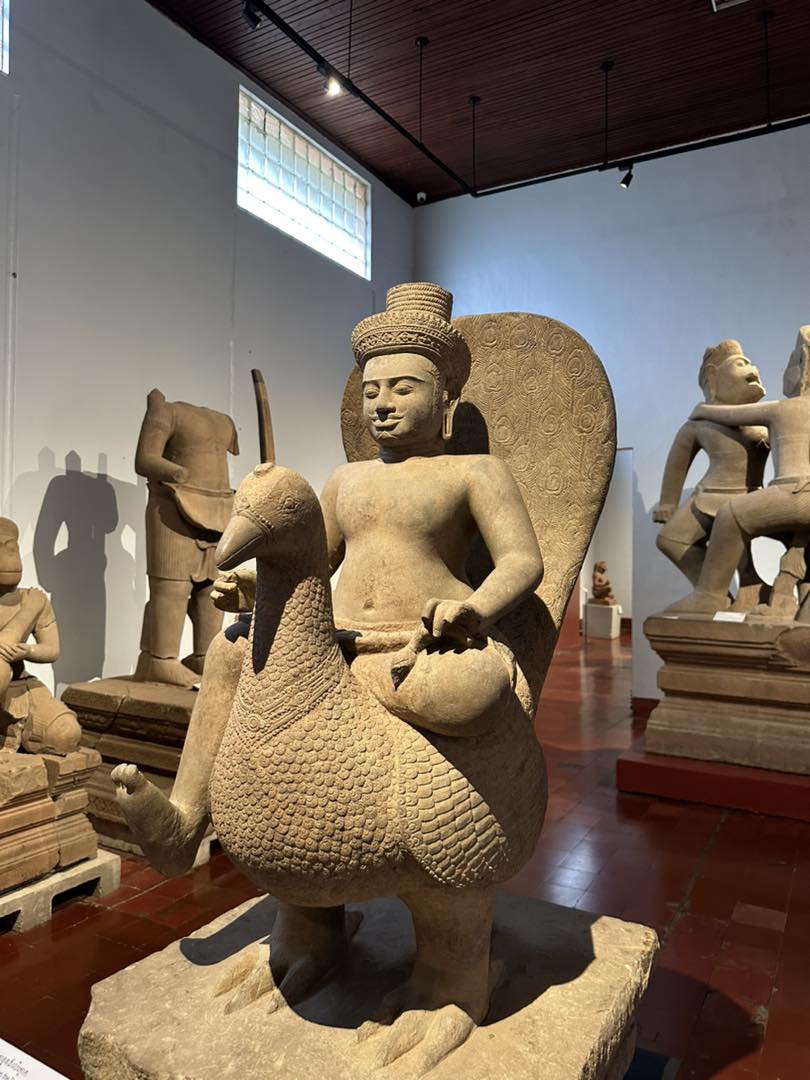 Skansa on peacock © Beyondangkor.org
Skansa on peacock © Beyondangkor.org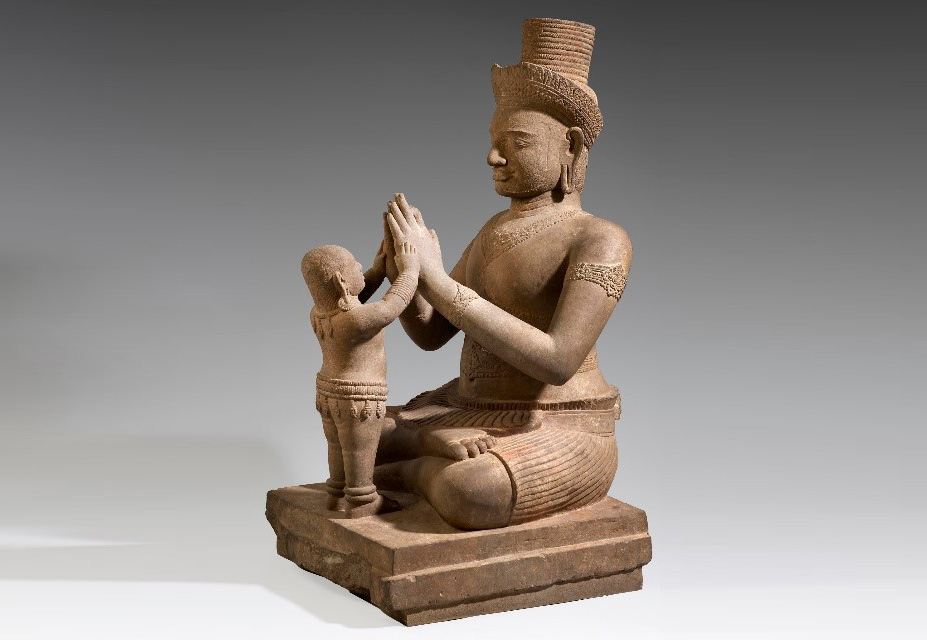 Shiva-Skanda (ព្រះឥសូរ និងកូនរបស់ទ្រង់” ព្រះស្កន្ទ”) © National Authority of Preah Vihear
Shiva-Skanda (ព្រះឥសូរ និងកូនរបស់ទ្រង់” ព្រះស្កន្ទ”) © National Authority of Preah Vihear

